Remember that song “Zoot Suit Riot”?
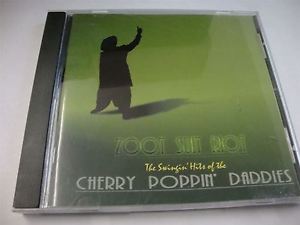
I recently discovered this footnote in swing era history:
After a concert by the celebrated orchestra of drummer Gene Krupa, two of the band members, a pianist and sax player, were assaulted by sailors, apparently inspired by the events in Los Angeles. The band members were attired in band uniforms of blue gabardine jackets, dark trousers, and bow ties. One of the victims of the beating remembered being cursed by the servicemen as a Zoot suiter.
The “event in Los Angeles” was the Zoot Suit Riots.
Now, If this happened today, it would shake the community. You would read about it on social media, it would make the news, and locally it would bring neighborhoods together. When Keytar Bear, a Boston/Cambridge area busker, was assaulted in 2014, locals worked together to run fundraising campaigns to repair his instrument and help him pay his medical bills.
In 1943, when two of Krupa’s musicians got beaten up, it barely registered in the news.
The reason why is because this event came a few days after the start of a massive campaign of terror in which U.S. Navy sailors, backed by local policemen and inflated by various civilians, canvassed across 1943 Los Angeles, California singling out and beating young latinos. This was the Zoot Suit Riots.
Zoot suits
Born out of a Depression era necessity for young men to wear their father’s and grandfather’s old suits (which were typically too large) before being able to afford their own, the zoot suit evolved into a fashionable identifying uniform for young men from marginalized social groups, starting with African Americans in places like New Orleans and Harlem before catching on with Chicanos on the west coast.
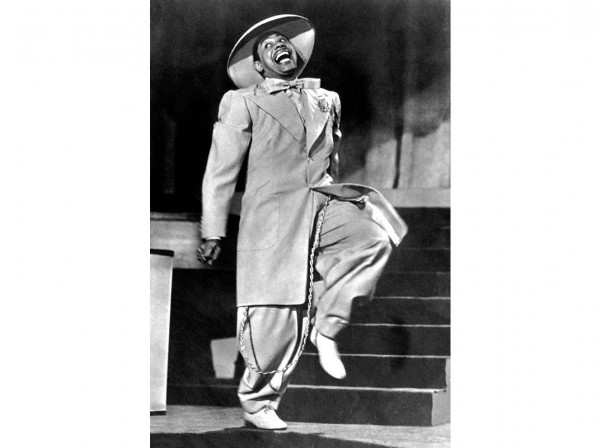
The U.S. War Production Board stipulated that the suits used too much fabric, saying the fabric should be going towards the war effort. Most zoot suit tailors stopped production, but while some were made through the black market, most that existed by 1942 were suits that had previously been made.
Tensions rise
The powder keg was primed on August 2, 1942, when José Gallardo Díaz was found dying on the side of a road leading to a swimming hole in Commence, California. He passed within hours of being discovered, and Los Angeles police rushed to arrest 17 Mexican-American youths. Despite a lack of evidence, they were held in prison and eventually convicted, some of murder. They were never allowed to change their clothes, and when their name was called in court, they were required to stand up, regardless of how serious the statement was, so that the jury could see them in their zoot suits, which the judge of the case, Judge Fricke, said were “obviously” worn only by “hoodlums.
Judge Fricke also permitted the chief of the Foreign Relations Bureau of the Los Angeles sheriff’s office, E. Duran Ayres, to testify as an “expert witness” that Mexicans as a community had a “blood-thirst” and a “biological predisposition” to crime and killing, citing the culture of human sacrifice practiced by their Aztec ancestors.
The convictions were all overturned within a year or two, but the damage in the community had been done, and LA police and press all referred to Mexican American youths as “pachuco hoodlums and baby gangsters.”
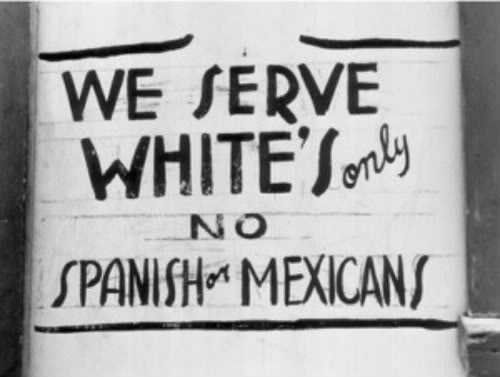
The Zoot Suit Riots begin
Tension built in the area over the next year, sometimes escalating into violence. One instance, on June 3, 1943, involved sailors getting into an argument with some Mexican American youth in zoot suits. Nothing happened, but the sailors told the police they were ambushed and beaten by the youths. LAPD showed up with a group of off-duty officers called the “Vengeance Squad” intending to remove “pachuco gangs” from the area by force.
Finally, the riots moved to the main segment, as thousands of enlisted military members and civilians marched in formation through the streets of LA, beating every young Mexican American they could find. They burst into bars, clubs, movie theaters and dance halls to drag youths into the streets to be beaten.
In one incident, sailors dragged two zoot suiters on-stage as a film was being screened, stripped them in front of the audience, and then urinated on their suits.
Police joined in on the violence after being given orders not to arrest anyone.
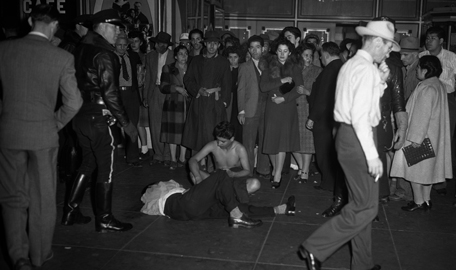
Journalist Carey McWilliams wrote about the mass assault:
Marching through the streets of downtown Los Angeles, a mob of several thousand soldiers, sailors, and civilians, proceeded to beat up every zoot suiter they could find. Pushing its way into the important motion picture theaters, the mob ordered the management to turn on the house lights and then ran up and down the aisles dragging Mexicans out of their seats. Streetcars were halted while Mexicans, and some Filipinos and Negroes, were jerked from their seats, pushed into the streets and beaten with a sadistic frenzy.
The local newspapers continued to raise the tension by praising the attacks for their “cleansing effect.”
Now, at this point it’s worth mentioning that in 1909, California passed a eugenics law that let prisons sterilize anyone they deemed unfit for society. And by 1921, California produced 80% of the nation’s forced sterilizations. Almost all were done through of the concept of “white manhood,” where white surgeons thought that replacing the testicles of men of color with testicles from deceased white men who were considered fit for society during their life would make men better. In their minds, they were simply gifting proper manhood, or, fixing improper manhood.
California’s sterilization program directly inspired the Nazi sterilization law of 1934, and much of America’s racism against people of color, especially African Americans and Indigenous peoples directly inspired Hitler.
So, if you are thinking that the language used by the press lauding the Zoot Suit Riots sounded a bit Nazi-ish, your instincts were correct. At no point did local papers mention the all-white mobs marauding through the streets, instead choosing to paint the victims as members of violent bloodthirsty gangs.
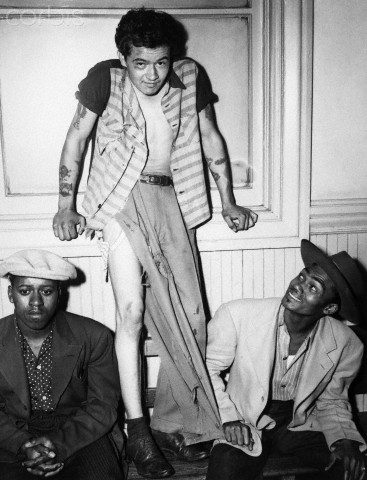
The LA City Council passed a law making the donning of a zoot suit a criminal act. The riots expanded into general racism as the attackers took the opportunity to beat up African Americans as well. The zoot suit, once a symbol of independence and youthful freedom, was now a convenient signifier, providing an easy excuse for the white supremacist population to unleash a wave of brutal violence.
The riots further expanded into major cities around the country, including NYC and Philadelphia, where Gene Krupa’s two members were beaten. It was never reported which two players, but I speculate that pianist Joe Springer may have been one of the victims.
Finally, the Zoot Suit Riots spread to Detroit, which saw the worst race riot in the city’s history, as again U.S. military sailors joined civilians and police in attacking black citizens. The white assailants were generally young, unemployed, and traveled a significant distance to engage in organized armed violence, while the local black men caught up were longtime residents, typically older, married, employed, middle class, no criminal record, mostly defending their homes. Local officials variously blamed “negro hoodlums” or the NAACP, with one official citing the “southern heritage” of involved black people as the reason for their supposed violence. The Axis powers of WW2 used the attacks in Detroit and elsewhere as both a propaganda boost at home and on the battlefield, leaving literature for black American soldiers, prodding them to defect.
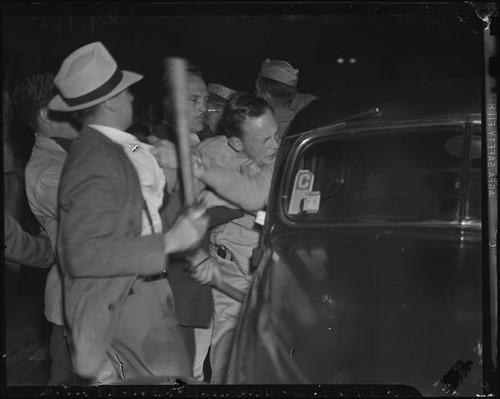
In every city, the riots ended when state or federal troops entered the fray, but only to return military servicemen to their stations, as their lives mattered more in the war effort than the lives of minority citizens. The military’s official position was that the sailors acted in self defense.
“Zoot Suit Riot”
In 2009, Steve Perry, the leader of Cherry Poppin’ Daddies, wrote about his 1997 hit ska single “Zoot Suit Riot” saying that he intended the song to be an anthem for the 90s swing revival scene.
I guess it seemed like a Pachuco rallying cry that could double as a dance anthem for those of us interested in swing music and culture at a time when nobody else was. It was an expression of a proud marginalism. That’s not that deep, but there you go.
To me, the simplified duality I used as I wrote the song was: we swingers were in solidarity with our counter cultural ancestors the ‘Zoot Suiters’ and we were opposed to the ‘sailors’ who represented the squares who weren’t yet hip to our growing communal jive.”
So if you’ve never heard of the Zoot Suit Riots, it’s likely because of how popular culture reduced the zoot suit to a Halloween costume. Or how the Cherry Poppin’ Daddies wrote a song about the violence of the riots from the perspective of a laid back person of color casually throwing back a beer as he fends off unhip sailors with a smirk.
The sailors weren’t “squares,” they were white supremacists, and unless young white kids were stripped by police on stage at a ska show in the 90s and had their expensive hand-me-downs urinated on while they were beaten, then they actually have little in common with their “cultural ancestors,” people who were alive and active in the same towns where Cherry Poppin’ Daddies played “Zoot Suit Riot” for fans.
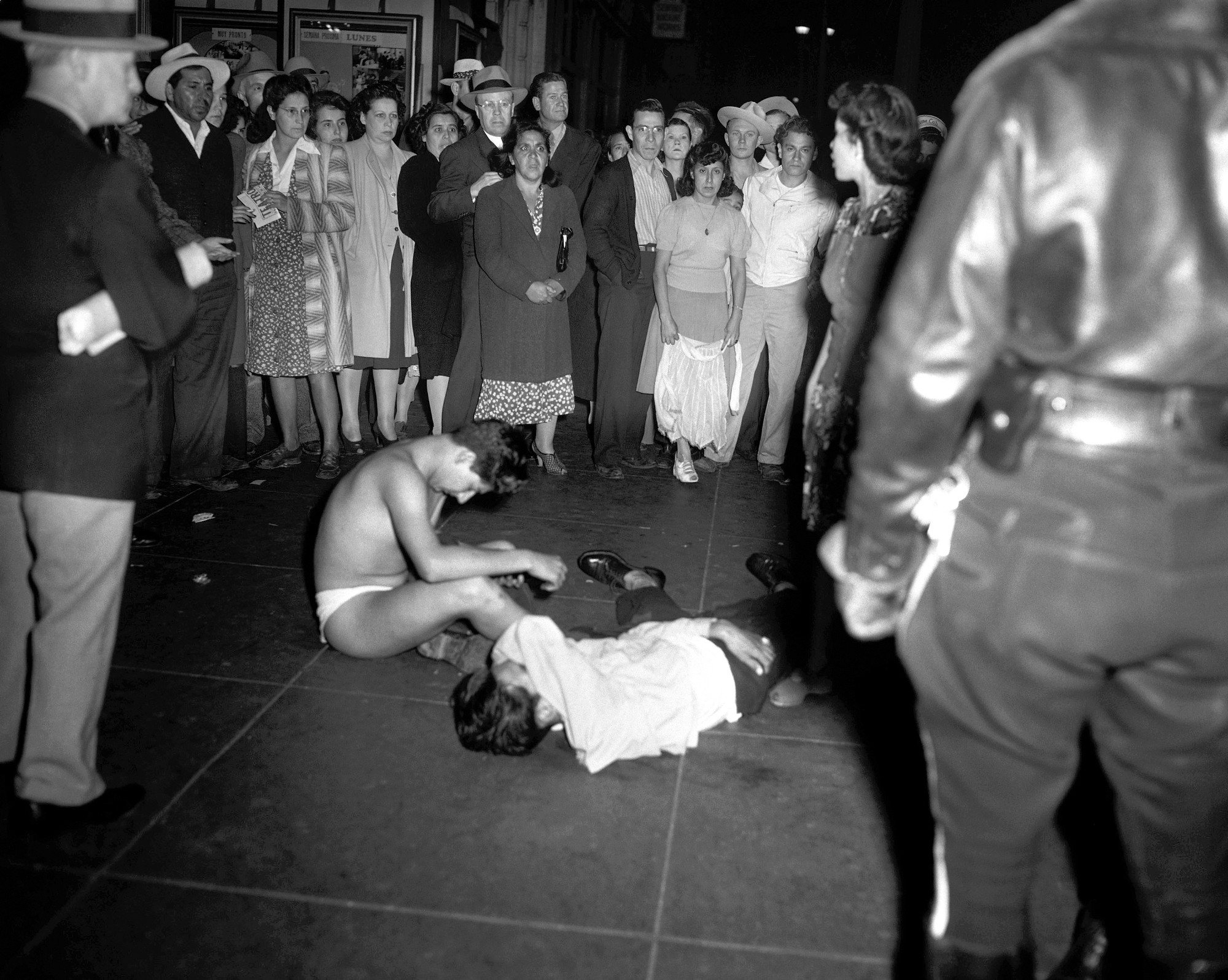
Why it matters
These atrocities weren’t the first of their kind, and they weren’t the last. But it’s worth pointing them out with the minor connection to Krupa’s band because it’s important to never forget that the history of the swing era is fundamentally intertwined with racism and white supremacy. These were the times jazz musicians lived in. Big bands were segregated. Gunther Schuller’s definitive tome of the time period, “The Swing Era,” divides the major bands by chapter into “black” and “white,” both out of historical necessity and out of a recognized need to not whitewash the reality of the era. For Gene Krupa to have an integrated band was still radical in 1943, and his non-white band members knew there were risks in joining a mostly-white band, regardless of whether they were in the south, the north, or on the west coast.
The swing era is fundamentally defined by segregation. It’s a fact that cannot be ignored. This affected every possible aspect of the music, from the unknown number of black musicians who never got the chance to succeed, to white bands having a disproportionate amount of social capital, which they used to hire away the best black musicians, record a larger volume of material with a wider range of distribution, and play gigs through a much larger collection of viable venues.
As enthusiasts of the music, it’s our responsibility to understand this, incorporate our knowledge of it into how we present the music today, and learn from it.
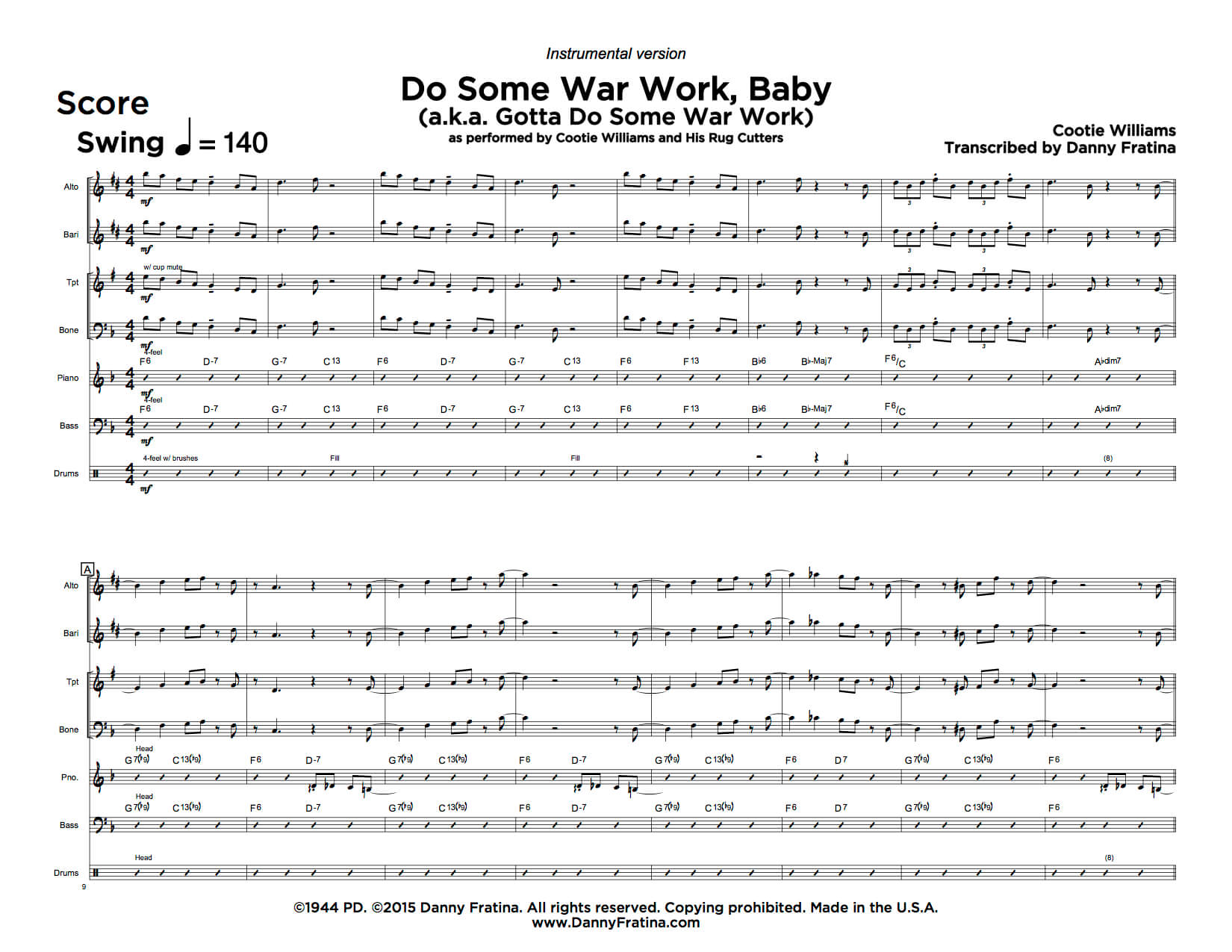
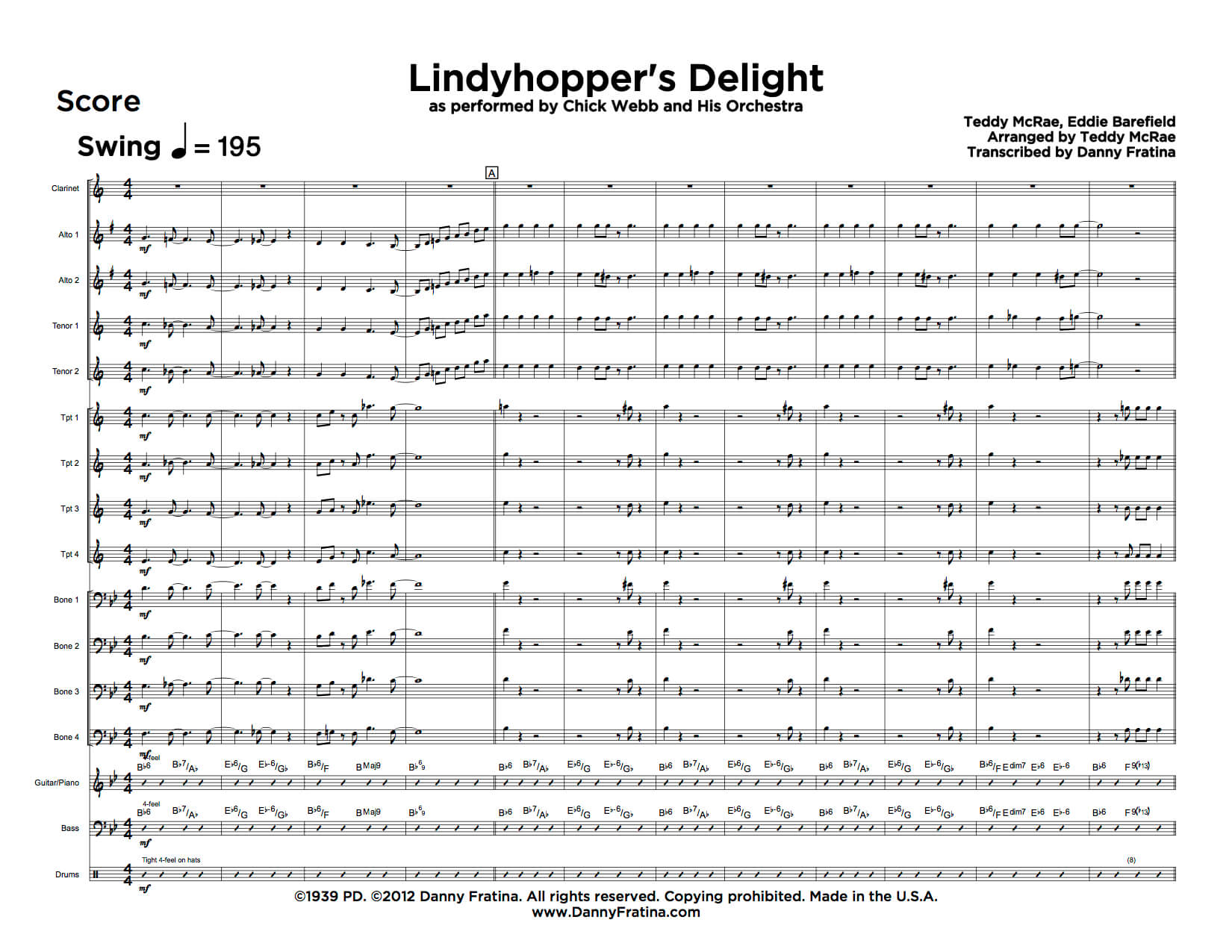
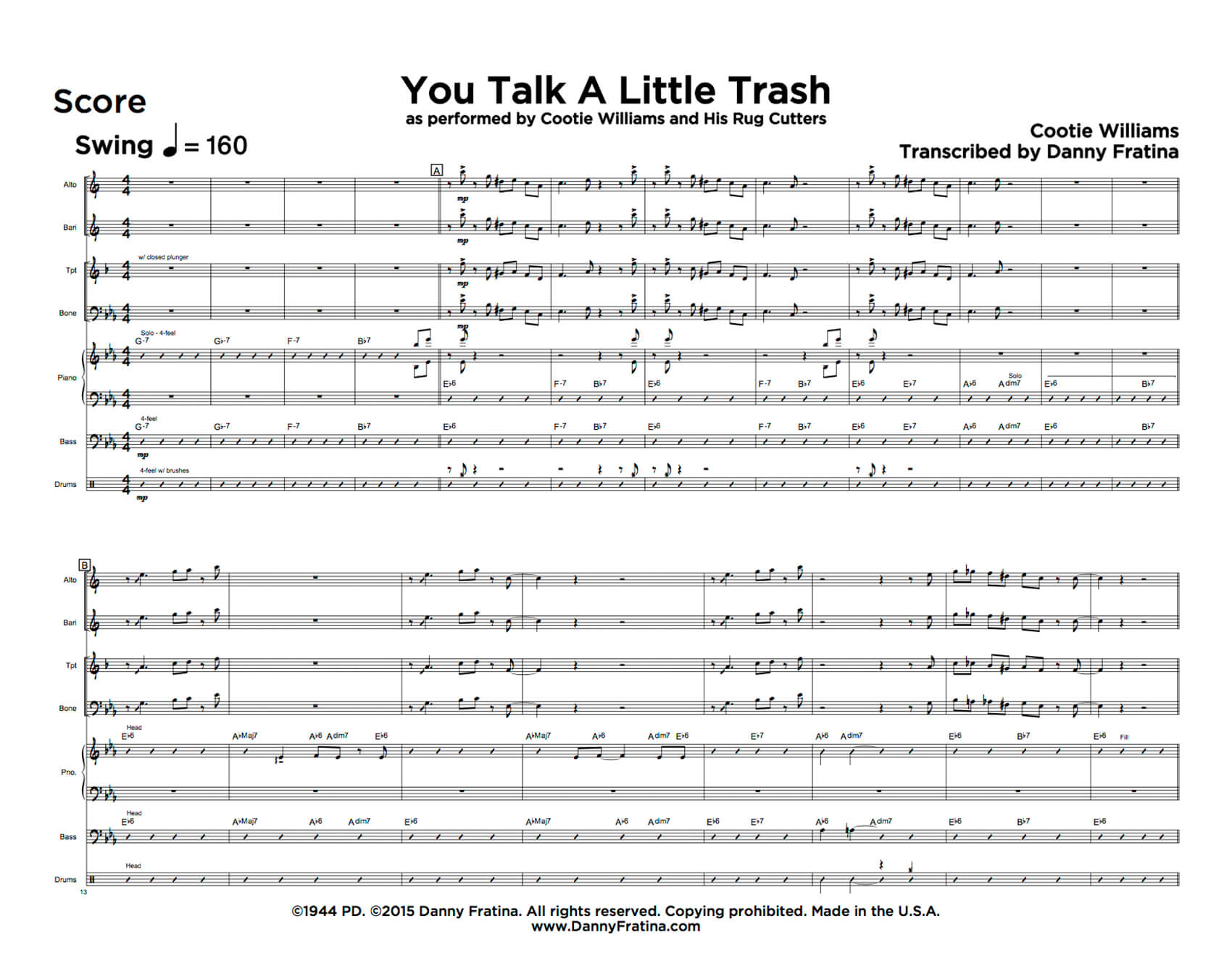

Leave A Comment